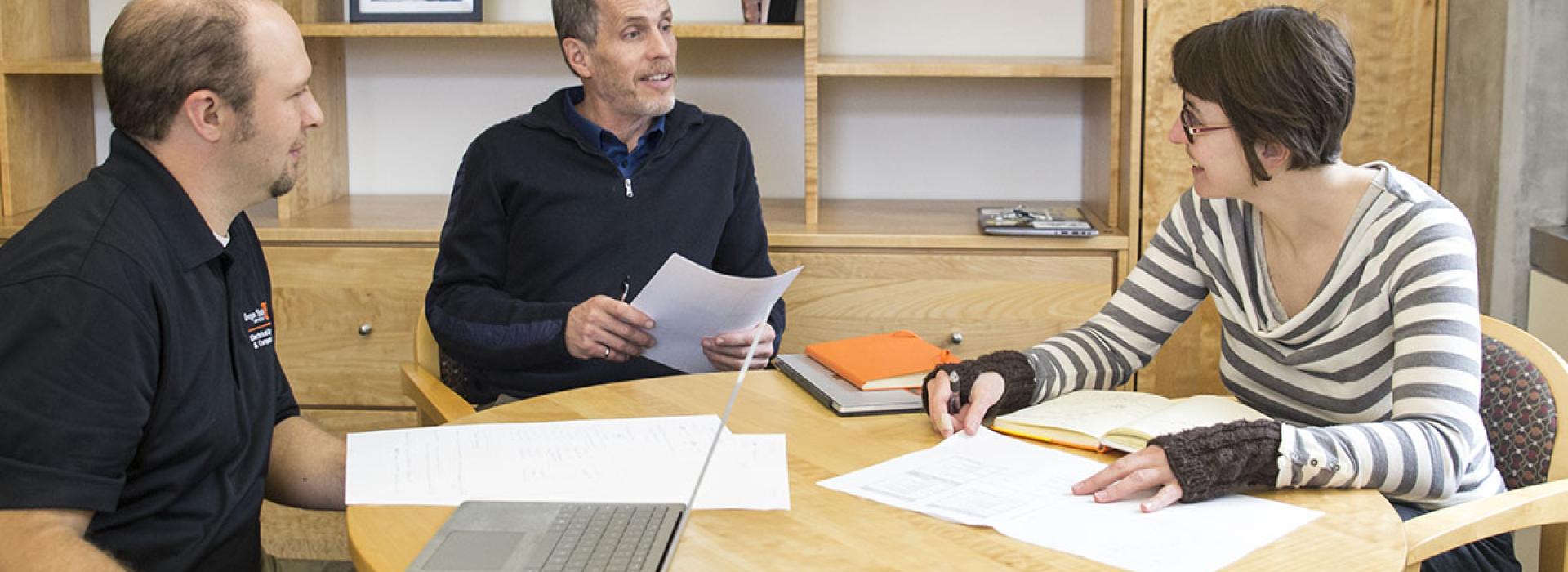Although Tom Weller’s degrees are all in electrical engineering, he was not one of those kids who grew up taking apart electronics.
“I grew up cutting grass and painting houses,” Weller said of his Midwestern upbringing in Battle Creek, Michigan, known as “Cereal City,” the birthplace and headquarters of Kellogg’s.
In July 2018, Tom Weller became head of the Oregon State University College of Engineering’s School of Electrical Engineering and Computer Science, and was named the Michael and Judith Gaulke Chair in Electrical Engineering and Computer Science.
But when he started his career, he did not intend to go into academia. The path he took was influenced by key people along the way.
“I feel like I’ve had a lot of really good role models,” he said. “I tend to pay attention to what other people do and get inspired by them.”
His first role model nudged him towards engineering — his father was a civil engineer who worked as an architect.
“I remember many nights I was watching my dad draw house plans late into the evening,” he said.
Weller did not exactly follow in his father’s footsteps, but his work also requires designing in three dimensions. Only his products are much smaller — circuits.
Really small circuits. Specifically, Weller’s expertise is in 3D micromachining for high-frequency applications. He started with things like antennas for Wi-Fi enabled drones. Throughout his career in academia, Weller and his colleagues have continued to develop the technology to keep up with even higher-frequency applications, ramping up from 2 gigahertz Wi-Fi applications to 100 gigahertz applications, like automotive radar for self-driving cars.
Weller says he is not artistic like his father. But, as with drawing house plans, designing 3D circuits requires creativity to satisfy multiple constraints. It is the connection between form and function that got him hooked on circuit design in the area of electromagnetics.
“When you are designing antennas and distributed circuits, the shape has everything to do with how it functions, so I think that’s what’s intrigued me about it,” he said.
"It’s really great to see your work in something that people use, but you can certainly have more direct impact on people as an educator." — Tom Weller
Two key people influenced him to pursue that particular area. Linda Katehi, then a professor at the University of Michigan, helped him get an internship at the Environmental Research Institute, where he discovered his interest in electromagnetics. And Jo Stiles, his supervisor at his first job after college, at Hughes Aircraft Company, encouraged him to pursue a graduate degree.
Another pivotal moment came when he met an academic whom he really admired: the late Rudy Henning, an icon in the microwave industry.
“He was telling me about his 10-year plan and was 72 at the time! And I thought, ‘This guy is pretty awesome.’ So, meeting him is what got me interested in being an academic,” Weller said.
Before moving to Oregon, Weller developed his academic career at University of South Florida (USF), where he served as a professor for 23 years. He moved into leadership at the end of his time there as associate dean for research in the College of Engineering from 2007 to 2012, and as chair of the Department of Electrical Engineering from 2012 to 2018.
In 2001, he took time off from academia to co-found Modelithics Inc., a company specializing in microwave modeling services and computer-aided engineering model libraries. The company was a spinoff from research his lab at USF performed for Motorola, which became Modelithics’ first customer. Now in its 18th year, Modelithics has worked with nearly every major company in the microwave/millimeter wave industry.
Weller valued the experience of building a company but decided it was not feasible to keep a hand in both industry and academia. So, in 2007 he stepped down from running the company and now serves as an advisor to Modelithics.
“It’s really great to see your work in something that people use, but you can certainly have more direct impact on people as an educator,” he said.
Even though he loves teaching, Weller says he was lured into administration when he realized he could have more impact by helping faculty and by guiding an academic unit to set and achieve goals. He was attracted to the school head position at Oregon State because he felt running an organization more than double in size would be a good challenge for him.
The location was also a plus. Since he and his wife enjoy hiking and camping, the natural beauty of the Pacific Northwest was definitely a draw, and he also saw huge opportunities in the Silicon Forest.
“We have really great industries around us, and the company support is pretty amazing,” he said. “I think all the companies value partnering with us, and we have an opportunity for a unique relationship with industry that other universities don’t have.”
Weller’s focus for the school in the near future is making sure that all students from different backgrounds have the same opportunity for success. He plans to take a holistic approach to education that recognizes, understands and appreciates the different challenges that students have. This will include looking closely at how courses and the curriculum are designed as well as considering mentoring programs.
“If every single student who leaves our school is the prized employee of a company out there, then we have met our goal,” he said.





